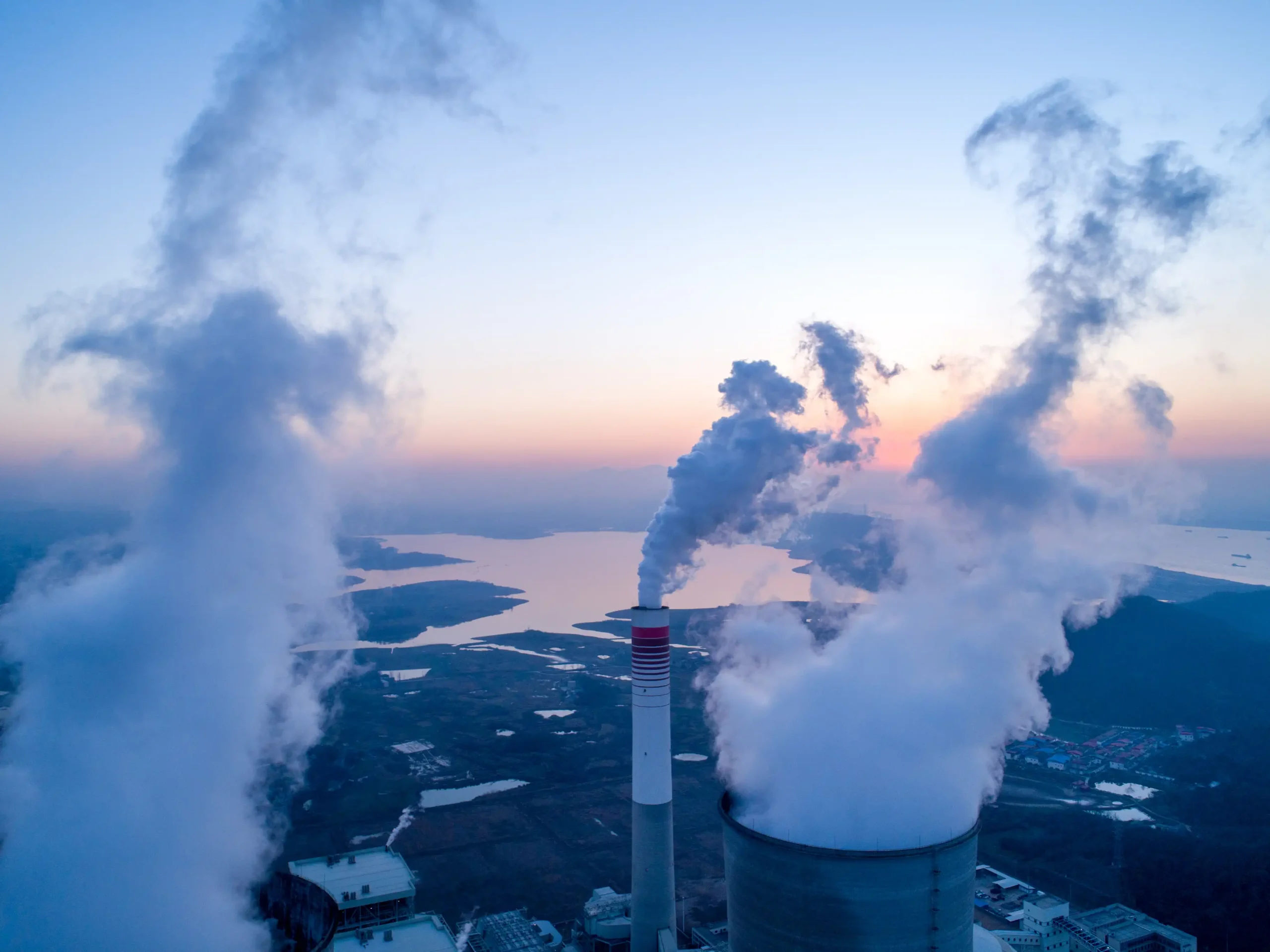If you can think way back to 2015, you may remember the United Nations Climate Change Conference in Paris, France. This conference was where the term, “Net Zero” first made its mark and since then it has become a buzzword in sustainability discussions around the world.
As a part of The Paris Agreement, the term, “Net Zero” refers to achieving a balance between the amount of greenhouse gas emissions produced and the amount removed from the atmosphere.
And finding this balance is far from easy. For companies in the private sector, managing science based target initiatives must be balanced with near-term business objectives, especially in countries with larger GDP.
Emission reductions are crucial in tackling the climate crisis we are facing today and the goal of “net zero” is one that every company should be striving to make.
In this article, we cover:
- What is Net Zero?
- The Importance of Achieving Net Zero
- Net Zero vs Carbon Neutral
- Why is Net Zero Important?
- Strategies for Achieving Net Zero
- Challenges of Achieving Net Zero
- Net Zero Packaging
What is Net Zero?
The term “net zero” first came about from the concept of “carbon neutrality,” which refers to balancing carbon emissions with carbon removal. For years this term was highly regarded but the issue was it didn’t account for greenhouse gases, such as methane, besides carbon dioxide.
Just reducing carbon emissions was simply not enough, and architects, engineers, and supply chain professionals around the world saw this flaw.
As a result the term, “net zero” was coined to describe a state where the total amount of greenhouse gas emissions produced equals the amount removed from the atmosphere, resulting in the net-zero emissions effects on the climate.
Although the route to achieving “net zero” looks different for every company, the end goal for everyone is to reduce global emissions and global warming.
For most companies, this typically starts with reducing emissions as much as possible and then implementing offsets for the remaining residual emissions by investing in activities that remove carbon dioxide from the atmosphere.
In practice, GHG emission reduction can be done through measures such as renewable energy implementation or leveraging biofuels, improvement of energy efficiency, or waste reduction across supply chains and value chains.
But even with all these emission reductions in place companies must take the next step in offsetting their residual emissions to truly meet net-zero targets.
Companies can implement offsets by investing in renewable energy projects such as solar or wind power, or decarbonization technology. For other businesses, offsets may come from energy-efficient lighting or installing energy-efficient equipment onsight.
Fossil fuel cutbacks and meeting emissions reduction targets is not an easy task for any company but these changes are critical in a world aiming for sustainability.
The Importance of Achieving Net Zero
Net Zero goes far beyond mitigating climate change, and it’s not an easy goal to achieve. But ease aside, it is critical in preserving the health and well-being of the planet and its inhabitants.
Back to The Paris Agreement, when the term, “net zero” was born, the target of limiting global warming below 1.5 degrees Celsius above pre-industrial levels was set. This target is impossible to achieve without net zero emissions and countries (and companies) rethinking their climate policy.
Achieving net zero means limiting global warming and preventing the worst impacts of climate change, such as extreme weather events, rising sea levels, and food and water scarcity.
And preventing these impacts is more than just important, they are necessary… No matter who you are or what company you work for, taking climate action is a must.
Net Zero vs Carbon Neutral
Both net zero and carbon-neutral are key terms used when talking about climate action- each equally and uniquely important.
Carbon neutrality refers to situations where a company’s carbon dioxide (CO2) production during business operations is balanced by CO2 emission reduction in other elements of the business-typically through offsetting.
And although net-zero takes the same aim in balancing the release with the reduction of greenhouse gases (GHG) the term takes it a step further.
Net Zero not only holds businesses accountable for their carbon dioxide production but for all GHG emissions produced by a company from production to transportation.
Nevertheless, achieving either carbon neutrality or net zero requires reducing emissions and drastic shifts in most company business models.
Why is Net Zero Important?
The reality is that climate change is real and it’s in the hands of individual companies to implement sustainability practices that will help combat global warming and reduce overall global temperature.
Companies making the commitment to zero carbon will also help build resilience to the impacts of climate change through their entire business model.
Unfortunately, even climate science cannot predict extreme weather events and rising sea levels, although, companies with sustainability practices and net zero targets in check will find adapting to these events much less catastrophic for all stakeholders involved.
Not only are net-zero commitments important in tackling the effects of climate change but they also demonstrate leadership and devotion to addressing the global challenge of climate change.
Stakeholders, including customers, employees, and investors will all be looking for net-zero commitments and companies who achieve these targets without questions will improve business relationships across the board. The companies that can scale up these climate policies while maintining profitabilty will be positioned to win.
Impacts on Climate Change
Achieving a net zero target is crucial for mitigating the impact of climate change across all industries – and it’s a large-scale transformation.
In its simplest terms, net-zero targets require significant reductions in GHG emissions. This can be reached by companies who take a variety of measures such as transitioning to renewable energy sources, improving energy efficiency, use of bioenergy, and reducing the use of fossil fuels…
All measures of which will help in slowing the rate of global warming.
Specifically, net-zero targets aim to limit the rise of global temperatures to no more than 1.5 degrees Celsius above pre-industrial levels. This is a critical threshold for avoiding the worst impacts of climate change such as more frequent and severe heatwaves, droughts, storms, and sea level rise…
Environmental events affect every company, industry, and person around the world whether that be directly or indirectly.
Companies taking the pledge to net zero are going to have to reevaluate how their business model can be more environmentally sustainable.
For some businesses, this may look like a reduction of water or air use and pollution, biodiversity preservation, or promotion of sustainable land use practices. For others, it may be done by restoring degraded lands or reducing deforestation.
Although, no matter what the change is, companies committing to net zero are going to have to reexamine their environmental effects and in return decrease their detrimental impacts on climate change.
Impacts on the Economy
The transition to a net zero economy can provide economic benefits for all stakeholders involved and is an exciting time for both innovation and technology.
This push towards net zero emissions pushed companies into new realms of creativity, and businesses that don’t stay on their toes are bound to fail.
Innovation and technological advancements have spurred in response to this shift towards a low-carbon economy. And net zero commitments will continue to give life to new products and services that can drive economic growth in new sectors.
Companies that invest in developing low-carbon technologies and processes have an opportunity to gain a competitive advantage in the market, as well as create new job opportunities- a win-win for everyone involved.
For example, companies that install renewable energy sources such as solar panels and wind turbines are required to hire skilled workers and developers, supporting a new sector of jobs in the workforce.
Not only can a shift to net-zero increase innovation and job opportunities but it can also drive cost savings, an opportunity no company wants to pass by. Businesses using energy-efficient technologies can reduce energy bills and others that shift to electric vehicles may see lower maintenance costs and fuel expenses.
All in all, as more countries set targets to achieve net zero emissions, businesses that can operate with lower emissions will be better positioned to compete in global markets and in the end will see more economic growth.
Examples of Net Zero
Across the world businesses and countries are putting net zero to work. One of the most common examples of net zero is renewable energy such as wind, solar, and hydro energy sources, that don’t emit carbon dioxide or other greenhouse gases.
In recent years the use of carbon capture and storage technologies has gained attention and popularity. These technologies are designed to capture and store carbon dioxide emissions from power plants and other industrial sources, overall reducing the amount of greenhouse gas in the environment.
For some industries, the focus has been on sustainable agriculture where companies have implemented regenerative farming practices and carbon storage in soil and vegetation.
Net-Zero goes beyond just reducing emission production and that is what makes it so powerful. The future of net zero is bright and businesses that want to be industry leaders are going to have to continue to push the limits of what defines net zero.
Strategies for Achieving Net Zero
As I’ve mentioned before achieving net zero poses a significant challenge for businesses across the globe but companies who set ambitious targets for emissions reduction will see the most success.
Companies that already have reduction measures in place can look to other strategies to achieve net zero. Reducing energy consumption and switching to renewable energy can help businesses reduce their carbon footprint even further.
The use of clean energy can also be implemented through the adoption of low-carbon transportation. Shifting to electric vehicle transportation or even encouraging employees to use public transportation or bicycles to get to work are all steps in the direction toward net zero.
And transportation goes beyond just how employees get to work… Businesses should be engaging with suppliers who are also aiming to reduce emissions in their supply chains and strive to reduce emissions that come from delivering final products.
Strategies for achieving net zero look unique for every company but those who prioritize innovation and creativity in meeting their goals are likely to be met with the most success.
Challenges of Achieving Net Zero
Substantial efforts and investments are required by companies taking on the challenges of net zero emissions.
Net zero can be costly for businesses, specifically in industries that rely heavily on fossil fuels. And some companies find it difficult to justify the upfront costs of transitioning to low-carbon technologies and infrastructure.
Additionally, for companies with complex global supply chains, making this transition and tracking emissions can seem near impossible. And without collaboration, and coordination across all teams, emission reduction targets can be challenging to meet.
For other industries, the difficulty may lie in gaining widespread public and customer support. Commitment to net zero may mean that purchasing prices have to increase to subsidize sustainable investments elsewhere.
Net Zero Packaging
Packaging can contribute to greenhouse gas emissions through the production and disposal of materials used in packaging, as well as through transportation and distribution.
Businesses looking to achieve net zero goals through packaging can take several paths…
A great first step may be reducing the number of packaging materials used or utilizing alternative materials that have a lower carbon footprint; or even better, using renewable materials, such as bioplastics.
Companies may also implement recycling and reuse programs to reduce the amount of waste generated by packaging and extend packaging life from longer.
Beyond the packaging itself, companies can also optimize their supply chain logistics to reduce emissions associated with transporting and distributing packaging materials and products.
Conclusion
As you can see committing to net zero is no easy task and not all companies have the tools to face the challenge head-on. But the reality is that net zero is not going anywhere and as time goes by stakeholders are going to be looking for net zero commitments.
Businesses that can optimize their product development and manage greenhouse gases in their supply chains will find the commitment much more feasible.
Companies taking a spec-first approach to business management will be enabled when it comes to identifying opportunities to commit to net zero.
Whether this means reducing the amount of packaging material used, optimizing packaging design to reduce waste and carbon footprint, or other strategies in meeting emission reduction targets, Specright has you covered.
To learn more about how Specright can help request a demo here.
Explore More Blogs
Get Started
With Specright’s Solution Suite, you can digitize, centralize, and link your specification data to drive efficiencies, intelligence, traceability, and collaboration within your organization and across your supply chain network.




